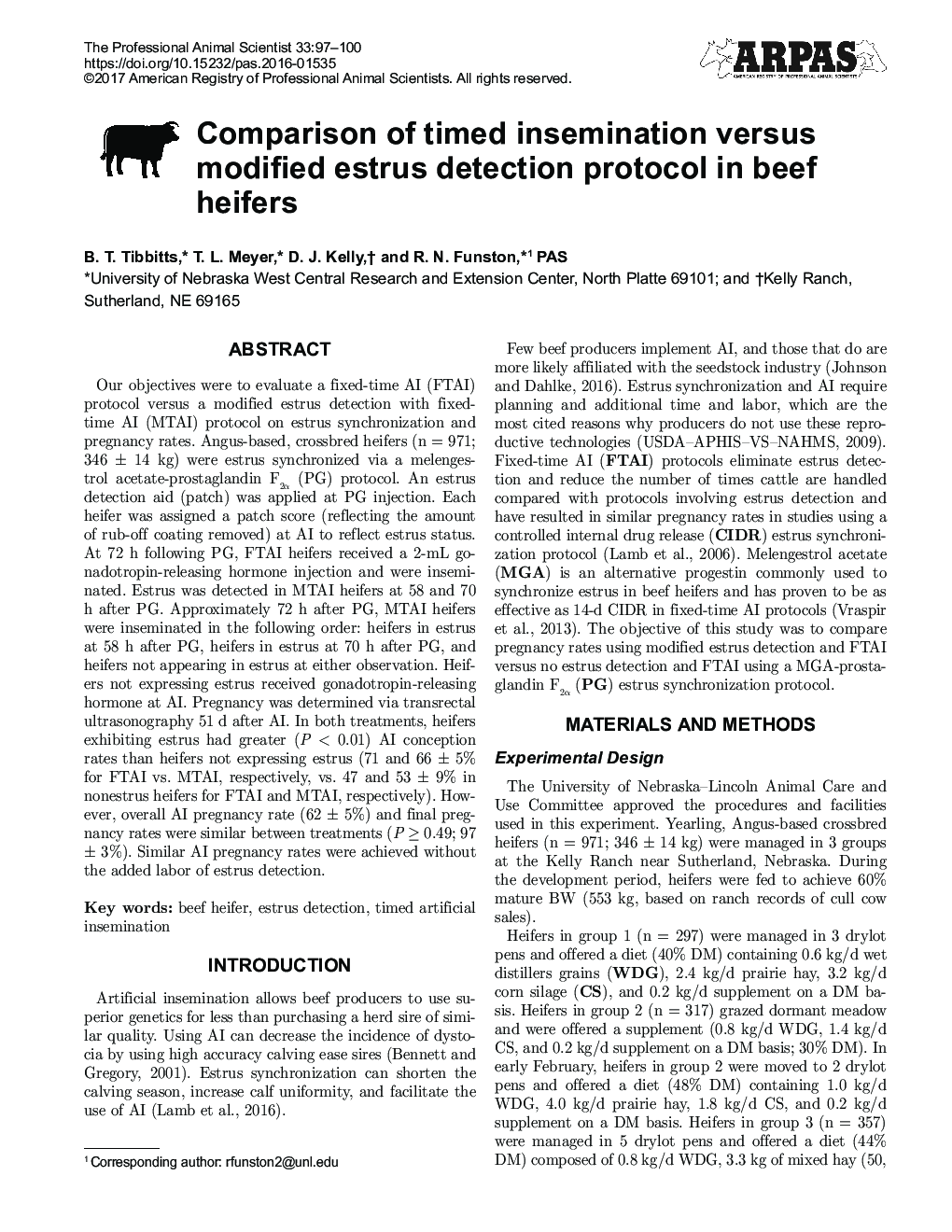| Article ID | Journal | Published Year | Pages | File Type |
|---|---|---|---|---|
| 8503788 | The Professional Animal Scientist | 2017 | 4 Pages |
Abstract
Our objectives were to evaluate a fixed-time AI (FTAI) protocol versus a modified estrus detection with fixed-time AI (MTAI) protocol on estrus synchronization and pregnancy rates. Angus-based, crossbred heifers (n = 971; 346 ± 14 kg) were estrus synchronized via a melengestrol acetate-prostaglandin F2α (PG) protocol. An estrus detection aid (patch) was applied at PG injection. Each heifer was assigned a patch score (reflecting the amount of rub-off coating removed) at AI to reflect estrus status. At 72 h following PG, FTAI heifers received a 2-mL gonadotropin-releasing hormone injection and were inseminated. Estrus was detected in MTAI heifers at 58 and 70 h after PG. Approximately 72 h after PG, MTAI heifers were inseminated in the following order: heifers in estrus at 58 h after PG, heifers in estrus at 70 h after PG, and heifers not appearing in estrus at either observation. Heifers not expressing estrus received gonadotropin-releasing hormone at AI. Pregnancy was determined via transrectal ultrasonography 51 d after AI. In both treatments, heifers exhibiting estrus had greater (P < 0.01) AI conception rates than heifers not expressing estrus (71 and 66 ± 5% for FTAI vs. MTAI, respectively, vs. 47 and 53 ± 9% in nonestrus heifers for FTAI and MTAI, respectively). However, overall AI pregnancy rate (62 ± 5%) and final pregnancy rates were similar between treatments (P ⥠0.49; 97 ± 3%). Similar AI pregnancy rates were achieved without the added labor of estrus detection.
Related Topics
Life Sciences
Agricultural and Biological Sciences
Animal Science and Zoology
Authors
B.T. Tibbitts, T.L. Meyer, D.J. Kelly, R.N. PAS,
